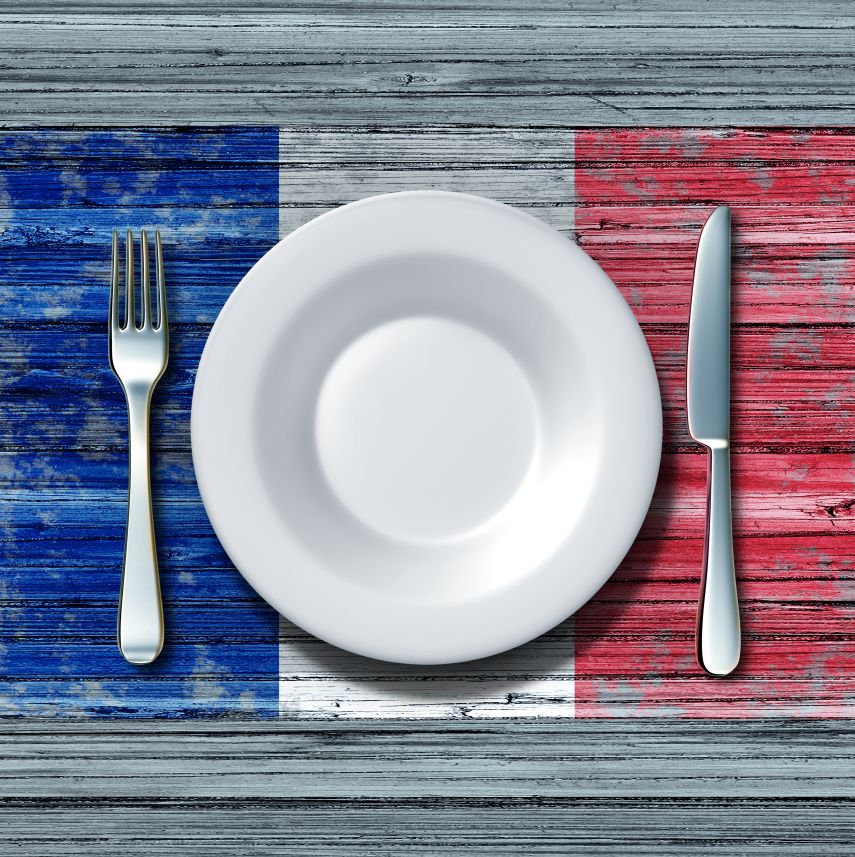When my French partner invited me to a dinner party in Marseille, I got cold feet. Not only because it was the first time I was invited into a French home, but also because embarrassing myself is, quite literally, a glass of wine away.
Throughout the week, I worried about what I should wear, how I should talk, and how I should act at the dinner table. My then-partner found it amusing and, dare I say, cute. But there’s nothing ‘cute’ about bad French table manners!
If you’re in the same position, or just want to know more about French table manners, I’m here to help. Today, I’ll list everything you need to know about good French dining etiquette. Let’s get started!
Don’t Have Time? Check Out These Quick Tips
Most French table manners are common sense; you shouldn’t burp, chew, or pick your teeth at the table, for instance. But there are some customs that only a local would know. If you’re in a hurry, here are the most important tips to keep in mind:
- Only sit when the host sits down.
- Only eat after the host says bon appétit.
- Break the baguette with your hands, not with a knife.
- Never ask for seconds or pour your own drink.
- Keep your hands above the table at all times.
- At a restaurant, the host pays the bill unless discussed otherwise.
Before Sitting at the Dinner Table
When greeting strangers, it’s polite to use handshakes rather than faire la bise (air kisses) or hugs. Those are only reserved for close friends, family, and children. By default, it’s best to stick with a handshake until you’re told otherwise.
Here are some other tips to keep in mind before sitting at the dinner table:

On Being Polite
To tack on my previous statement, when you’re speaking to someone you don’t know, it’s best to use titles such as Monsieur and Madame. Furthermore, much of the house is off-limits to guests, so make sure not to wander off from room to another.
Although it’s the opposite in the US, it’s considered rude to leave the dinner table no matter the circumstance, so use the toilet before you arrive.
And, finally, if you’re invited to another room, most probably the dining room for lunch or dinner, allow the senior members and women to enter the room ahead of you.
On Bringing Gifts
Always bring a gift for your host, whether it be flowers, chocolates, or a good bottle of wine. If you’re opting to bring the latter, it’s best to buy a bottle of French wine, as opposed to Italian wine and the like.
At the Dinner Table
Now that you’ve greeted and introduced yourself to the host, it’s time to sit at the dinner table.
Dining with French locals isn’t usually a quick affair. In fact, for them, lunch is described as an important time to socialize and get to know each other better. They believe that “family identity, work teams or friends are built around these moments.”
An online survey found that 43% of French people spend over 45 minutes eating lunch each day. Out of all 14 countries surveyed, this is by far the longest.
As you might expect, it’s polite to comment positively on the smell and look of the food, and even on how pretty the table looks. Doing so will let them know that you appreciate the food they served you.
Here are some other tips to keep in mind at the dinner table:
On Being Polite
Most of the French table manners are common sense. Don’t slurp, burp, or eat with your mouth open, don’t slouch at the dinner table, and don’t touch cheese with your fingers.
Others, however, are considered customary only to the French and most European cultures.
For example, because the seating arrangement is usually predetermined, you’ll need to wait until the host points to your seat. Once you know for certain where you’re going to sit, wait until the host sits down before you do the same.
Ideally, you shouldn’t eat until the host says bon appétit. But feel free to start if the host skips it.

On Drinking Wine
When you’re toasting, always look your toasting partner in the eye. Remember not to cross arms with anyone while clinking your glass.
Delicately wipe your lips before and after each sip of wine, but make sure not to leave any food or lipstick marks on the napkin. Also, no matter what, never pour your own drink.
While Eating
While eating, remember to hold the fork in your left hand, and the knife in your right. If you’re eating salad, don’t cut your lettuce with a knife. Instead, fold it with your knife and fork into little bite-sized bundles.
The baguette is a staple in French cuisine, which is why it comes with its own set of rules. For example, don’t slice the baguette with a knife or fork. Instead, break it with your hands. Once you break your baguette, leave it by the side of your plate, never on the top.
Make sure to eat all of the food on your plate but never ask for seconds — the host will offer seconds if there is any left.
At the Restaurant
If you’re invited to a restaurant, table manners are usually the same except for several additional factors.
On Being Polite
When entering a shop or restaurant, always greet the shopkeeper or wait staff with a bonjour (from morning till until about 6 pm) or bonsoir (after 6 pm).
At the dinner table, don’t snap your fingers when calling a waiter. Even outside France, this is considered extremely rude. If you can’t catch your waiter’s attention, subtly wave them over with a s’il vous plait (excuse me) to get their attention.
When you are ready to order, close your menu and place it down on the table.
On Paying and Tips
Unless discussed otherwise, the person who invited you to the meal will pay.
If you’re the host, you don’t have to tip your server as it’s already calculated in the bill itself. However, if you appreciate their service, it’s polite to round up the bill a little.
Final Thoughts
French table manners may look and sound intimidating, but they’re really not! Once you get the hang of it, you’ll be able to relax and join the conversation without worrying about where to place your utensils.
After dinner, don’t forget to send the host a thank you note or flowers the next day. Alternatively, you can call to say thank you and how much you enjoyed your evening.